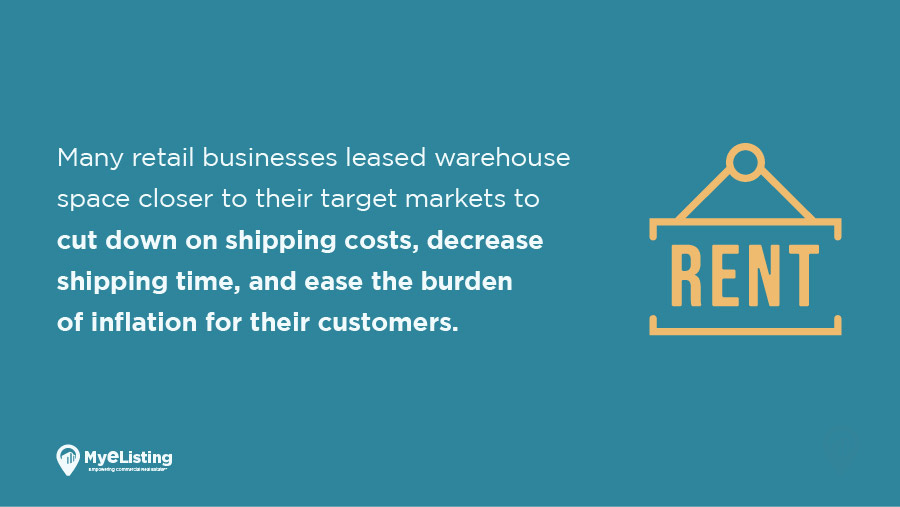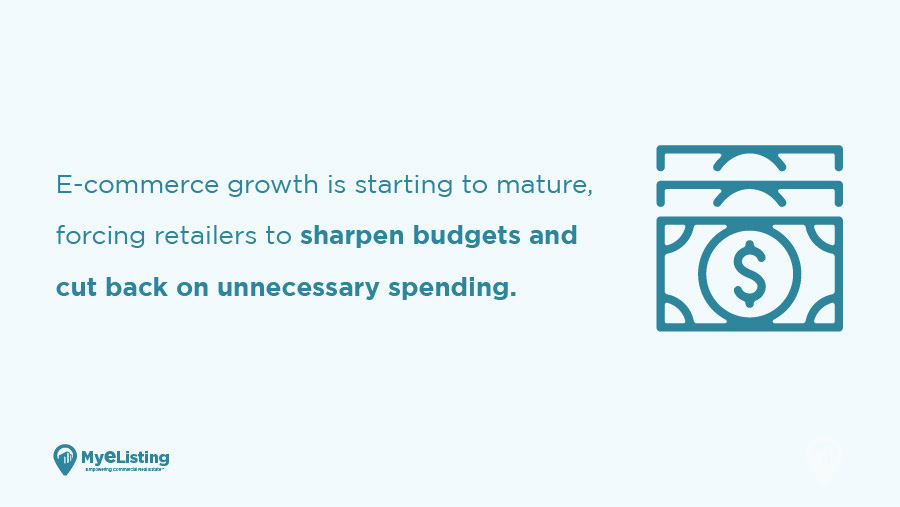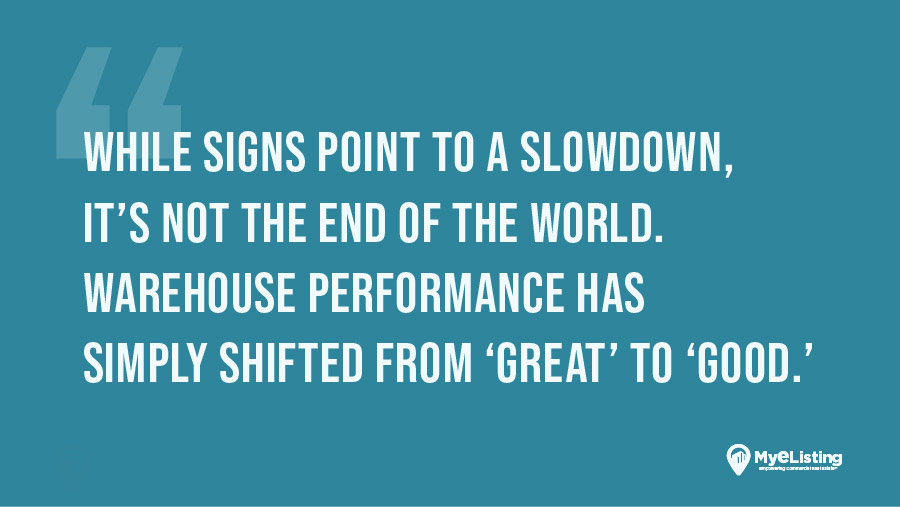National Warehouse Market Shows Signs of Slowdown in Q3 2022

Specializes in providing actionable insights into the commercial real estate space for investors, brokers, lessors, and lessees. He covers quarterly market data reports, investment strategies, how-to guides, and top-down perspectives on market movements.

After two years of exponential growth and vacancy rates dropping to as low as 1.45% in some markets, the national warehouse market is finally showing signs of a slowdown.
Slowing capital markets and expensive loans are leading commercial real estate developers to second-guess new project decisions for the ensuing year. On top of that, rising lease rates are causing retailers to find alternatives to warehouse storage, alternatives that lead to getting rid of excess inventory rather than storing it.
Let’s take a closer look at how the warehouse market is slowing down and what commercial real estate and retail professionals are doing about it.
The Story Behind the Warehouse Boom

The Coronavirus Pandemic sent demand for e-commerce goods to the moon. In order to compete with larger names like Amazon, many retail businesses leased warehouse space closer to their target markets to cut down on shipping costs, decrease shipping time, and ease the burden of inflation for their customers.
This was one of the primary drivers behind the warehouse boom, with many primary markets in the United States experiencing record-breaking levels of leasing activity, sales volume, and development as of Q2 2022, including:
- Phoenix, with a vacancy rate of 2.6% and a 7% quarterly increase in average direct asking rent;
- Colorado Springs, with a vacancy rate of 5.0% and a 7% yearly increase in average direct asking rent;
- Dallas, with a vacancy rate of 4.1% and the second-highest leasing activity on record;
- Houston, with a 6% quarterly decrease in vacancy and a 13.5% yearly increase in average direct asking rents;
- And even Chicago, with a 7% quarterly increase in average direct asking rents and a record-low vacancy rate of 4.5%.
This exponential growth in warehouse activity, however, largely occurred before the Fed’s aggressive rate-hike increases and peak inflation. It looks like the time for businesses to capitalize on affordable warehouse space is starting to come to an end.
What’s Causing the Warehouse Slowdown?
The supply chain and logistics hiccups so commonly associated with the Coronavirus Pandemic are starting to ease, but rising costs of order fulfillment and parcel rates are taking their place.
Parcel Rate Increases
In 2022, major parcel carriers enacted rate hike increases of nearly 6% in anticipation of rising shipping costs. Many companies today have no choice but to pass these rising costs on to the end consumer and lower excess inventory as much as possible.
As a result, warehouse leasing is slowing down. It’s taking longer to finalize deals, and retail businesses’ budgets for logistics and operational expenditures are starting to lack purchasing power.
Some retail businesses are opting to wait for a fresh slate in 2023 before signing new leases and storing more inventory.
Increasing Warehouse Development
At the onset of the pandemic up until Q2 2022, the demand for warehouse space in the United States far outpaced the existing supply, leading to the very favorable conditions we’re still seeing today.
But warehouse development for projects both announced and in various stages of construction started to uptick alongside this boom in demand, and now, we’re starting to see the fruits of this labor.
With more warehouse leasing options comes greater competition. With greater competition comes encouragement to create a better, more affordable deal for your customers. For the warehouse market in H2 2022, this means dropping asking rents or renegotiating leases when tenants either renew or vacate space.
Slowdowns in Consumer Spending Add Insult to Injury

Consumer spending, thanks to runaway inflation and an overall return to normalcy, barely grew at all in Q2 2022. E-commerce growth is starting to mature, forcing retailers to sharpen budgets and cut back on unnecessary spending.
The massive shifts in consumer spending and national addiction to online shopping fueled e-commerce and retail growth at the height of the pandemic, with e-commerce sales provided by omnichannel merchants exploding by nearly 45% in Q2 2020.
Since that time, e-commerce sales have been starting to moderate as consumers return to brick-and-mortar stores and spend less discretionary income on travel and impulse purchases.
Takeaways for Warehouse Investors

Some notable takeaways from this slowdown for warehouse investors:
- While signs point to a slowdown, it’s not the end of the world. Warehouse performance has simply shifted from “great” to “good.”
- Warehouse demand is still above pre-pandemic levels, according to industrial real estate developers.
- Warehouse space is still tight. National warehouse vacancy recently slipped to about 3.2% in Q3 2022 from 3.0% in Q2 2022 but is still at record lows.
Do your research, stay diligent, and happy investing.
Methodology
All figures presented in this article are based on MyEListing.com’s commercial real estate listing data in corroboration with other freely available data and information covering the commercial real estate industry.
List & Browse Industrial Real Estate for Free on MyEListing.com!
You can list and browse industrial real estate for free right here on MyEListing.com.
Simply sign up for a free account and get unlimited access to accurate local market intelligence, customized property type alerts, comp software, and more.
Article Search
Share
All Article Categories








